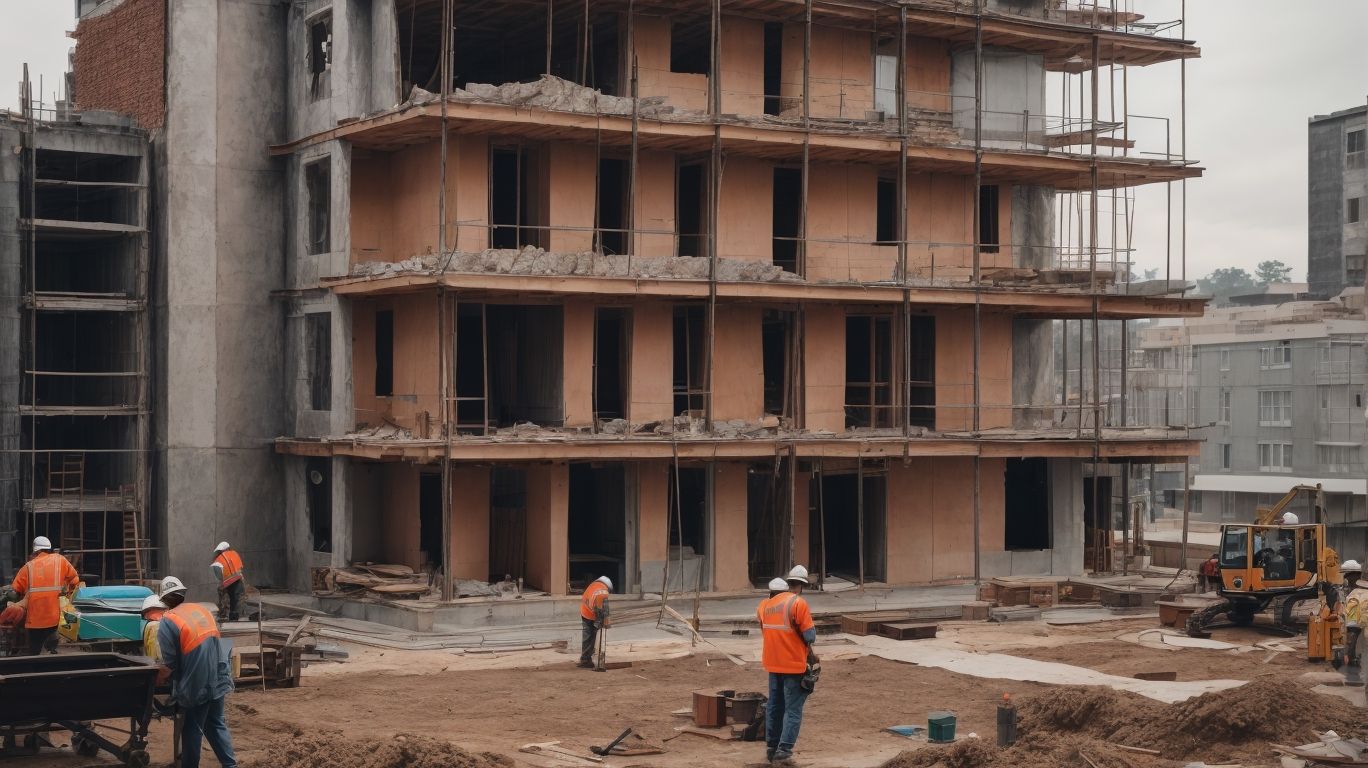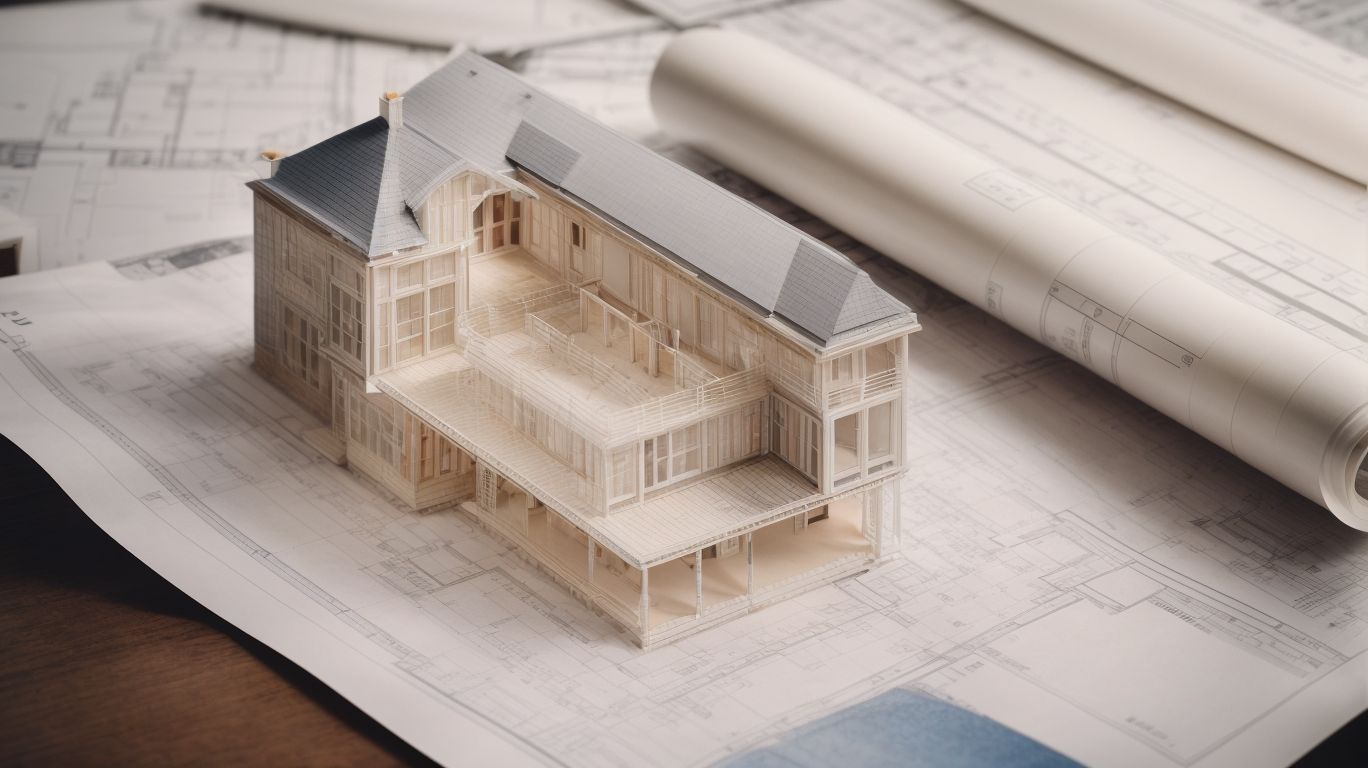
Navigating SF Home Renovations: A Structural Engineering Guide
Navigating SF Home Renovations: A Structural Engineering Guide
When it comes to renovating your home in San Francisco, one of the most critical aspects to consider is structural engineering. Understanding the importance of structural engineering in home renovations can make all the difference in ensuring the safety, integrity, and compliance of your project.
In this comprehensive guide, we will delve into the fundamental principles of structural engineering, its significance in home renovations, and the specific considerations that are crucial to take into account when renovating a home in San Francisco. From navigating building codes and permits to addressing seismic upgrades and ensuring the structural integrity of your home, we will cover everything you need to know to make informed decisions and avoid common pitfalls.
Whether you are planning a minor renovation or a major overhaul, choosing a qualified structural engineer can be the key to the success of your project. We will discuss the essential criteria for selecting the right professional to guide you through the complexities of structural engineering in home renovations.
We will highlight common mistakes that homeowners often make during the renovation process, and provide valuable insights on how to avoid these pitfalls.
By the end of this article, you will have a clear understanding of the crucial role that structural engineering plays in San Francisco home renovations and the steps you can take to ensure a successful and compliant project. So, let’s begin our exploration of the importance of structural engineering in SF home renovations.
The Importance of Structural Engineering in Home Renovations
The importance of structural engineering in home renovations cannot be overstated, particularly in a city like San Francisco where seismic activity necessitates careful attention to building safety and integrity.
This is especially evident when considering that San Francisco is located in an area prone to earthquakes. Structural engineers ensure that renovation plans comply with building permits and codes, providing crucial expertise in assessing the need for foundation repair, seismic retrofitting, and ensuring the overall stability and safety of the structure. Their involvement guarantees that the renovated homes not only meet aesthetic and functional requirements but also stand the test of time, ultimately safeguarding the well-being of residents.
What is Structural Engineering?
Structural engineering is a specialized field that focuses on the design and analysis of building structures, ensuring their stability, durability, and safety during various conditions, including seismic events in regions like San Francisco.
It involves applying core principles of physics and mathematics to develop innovative construction techniques, especially pertinent in home renovations. This expertise is crucial in ensuring the structural integrity of buildings during seismic upgrades, foundation repair, and remodeling projects. By collaborating with architects and construction teams, structural engineers play a vital role in safeguarding building safety and resilience, making them essential contributors to the construction industry.”
Why is Structural Engineering Important in Home Renovations?
The importance of structural engineering in home renovations lies in its ability to ensure the structural integrity and earthquake resistance of buildings, especially in regions prone to seismic activity like San Francisco.
Through seismic retrofit assessments and calculations, structural engineers play a pivotal role in strengthening existing structures to withstand potential seismic events. They help homeowners navigate the complex process of obtaining building permits by ensuring that the renovations comply with local building codes and regulations.
Renovation challenges, such as integrating modern design elements while preserving the building’s structural stability, are also carefully addressed by structural engineers to ensure a successful and safe home renovation.”
Structural Engineering Considerations for SF Home Renovations
When undertaking home renovations in San Francisco, specific structural engineering considerations must be addressed to meet building codes, ensure seismic stability, and maintain structural integrity.
These considerations often involve conducting a comprehensive structural analysis to evaluate the impact of structural modifications on the existing framework. Homeowners should prioritize seismic upgrades to enhance the resilience of the property against potential earthquakes. Foundation repair also plays a crucial role, especially in older homes, as it can address any structural weaknesses and ensure a stable base for the renovation work.
Adhering to construction standards and obtaining the necessary building permits are imperative to guarantee compliance and safety throughout the renovation process. Choosing suitable construction materials that are resilient to seismic activity is equally important for long-term durability and safety.
Building Codes and Permits
Adhering to building codes and obtaining the necessary permits is paramount for SF home renovations, ensuring compliance with regulatory standards and facilitating proper building inspections.
By adhering strictly to building codes and obtaining relevant permits, homeowners and contractors can guarantee that their renovation projects align with established regulations, promoting structural soundness and construction safety. These permits enable architects and designers to carefully plan and execute the renovation, ensuring that the structural integrity and aesthetics of the home are enhanced in a manner that is compliant and safe.
The inclusion of these essential requirements in the renovation process demonstrates expertise in renovation, commitment to safety, and a dedication to achieving high-quality outcomes.
Seismic Upgrades
Given the seismic activity in San Francisco, seismic upgrades are crucial for home renovations, enhancing the building’s earthquake resistance and aligning with local building regulations.
They play a vital role in ensuring structural integrity, minimizing potential damage, and safeguarding the inhabitants. These upgrades involve advanced building safety measures, such as reinforcing foundation connections, installing shear walls, and improving structural bracing.
By incorporating seismic upgrades into renovation projects, homeowners not only prioritize their safety but also increase the overall value of their property. This underscores the importance of seeking construction expertise that specializes in earthquake-resistant designs and retrofitting techniques to effectively address seismic hazards.
Foundation and Structural Integrity
Maintaining the foundation and structural integrity is essential in SF home renovations, requiring the use of appropriate construction materials and techniques to uphold building safety and seismic engineering standards.
This involves careful consideration of construction practices, such as reinforced concrete foundations, steel framing, and high-strength anchor bolts to resist seismic forces. The incorporation of seismic design principles, including damping systems and base isolation, ensures the ability of the structure to withstand earthquakes.
The selection of resilient building materials, such as flexible wood framing and shear walls, plays a crucial role in enhancing the seismic performance of homes in San Francisco. Adhering to these practices and standards is essential to mitigate the risks associated with seismic activity and safeguard the structural integrity of renovated homes.
Load-Bearing Walls
Assessing and reinforcing load-bearing walls is a crucial aspect of SF home renovations, ensuring structural stability and integrity through meticulous construction inspections and maintenance practices.
Such assessments are vital for homeowners and builders in San Francisco, especially when considering any modifications to the building’s structure. By prioritizing these assessments, it allows for proactive identification of potential issues, reducing the risk of unexpected complications during the renovation process.
Understanding the load-bearing capacity and condition of walls is essential in ensuring that the renovated space meets building codes and safety standards, providing a solid foundation for future construction and design plans.
Roof and Ceiling Structure
Evaluating and enhancing the roof and ceiling structure is crucial for SF home renovations, necessitating proficiency in construction standards, renovation expertise, and the utilization of advanced building techniques and materials.
This is especially essential in San Francisco due to the unique renovation challenges posed by the city’s diverse architecture, seismic considerations, and strict building codes. Incorporating modern building materials and techniques can significantly improve the structural integrity and energy efficiency of homes, aligning them with contemporary design standards. As construction projects in San Francisco require adherence to stringent regulations, ensuring the roof and ceiling structures meet safety and performance criteria is paramount for successful home renovations.
Plumbing and Electrical Systems
Upgrading plumbing and electrical systems is essential in SF home renovations, requiring the use of modern construction methods, practices, and rigorous construction inspections, especially for properties undergoing seismic retrofitting.
These upgrades not only ensure compliance with current building codes but also enhance the overall safety and efficiency of the property. Modern construction methods such as trenchless pipe replacement and efficient wiring layouts minimize disruptions to the existing structure during the renovation process, resulting in a more cost-effective and streamlined upgrade.
With the seismic hazard prevalent in the region, a thorough inspection and reinforcement of plumbing and electrical systems are crucial to fortifying the structure against potential seismic events, further underlining the significance of these upgrades in San Francisco home renovations.
Choosing a Structural Engineer for Your SF Home Renovation
Selecting a competent structural engineer for your San Francisco home renovation is a pivotal decision, requiring careful consideration of their expertise in residential renovations, construction industry knowledge, and ability to deliver effective engineering solutions.
You want to ensure that the engineer you choose has a proven track record in working with building contractors and possesses a deep understanding of the specific requirements for residential projects in the San Francisco area. It’s essential to find an engineer who can provide valuable renovation advice and tailor engineering solutions to suit the unique needs of your home renovation.
This may involve assessing the structural integrity of the existing property, understanding local building codes, and proposing efficient and cost-effective solutions for your renovation project.
Common Mistakes to Avoid in SF Home Renovations
When undertaking home renovations in San Francisco, it’s crucial to avoid common mistakes such as:
- Overlooking renovation challenges
- Disregarding building regulations
- Neglecting essential construction guidelines that ensure structural design and construction safety
Addressing renovation challenges requires thorough planning and consideration of factors such as structural stability, building techniques, and material selection. It’s important to consult with experienced professionals to navigate through the complexities of San Francisco’s building codes and zoning requirements.
When remodeling, adhere to seismic retrofitting guidelines to enhance the structural integrity of older homes. Pay attention to environmentally-friendly construction practices and incorporate energy-efficient solutions to make your renovation sustainable and cost-effective in the long run.
Not Getting Proper Permits
Ignoring the need for proper permits in San Francisco home renovations can lead to legal and safety issues, compromising compliance with building regulations, construction safety standards, and established construction practices and techniques.
This can result in severe consequences, such as fines, stop-work orders, and even having to undo completed work. Ignoring permit requirements may compromise the structural integrity and safety of the property, increasing the risk of accidents or hazards.
It’s crucial to adhere to building regulations and codes, ensuring that the renovation work meets quality and safety standards. Obtaining proper permits showcases expertise and professionalism in the construction industry, instilling confidence in the quality of the renovation project.
Cutting Corners on Structural Upgrades
Cutting corners on structural upgrades in San Francisco home renovations can compromise the property’s integrity, seismic retrofitting effectiveness, and overall building maintenance, impacting the structural upgrades, construction techniques, and building enhancements.
This can lead to increased vulnerability to seismic activity, compromising the safety of the occupants and potentially leading to costly repairs in the future. Neglecting proper building maintenance and construction techniques could result in decreased durability, reduced energy efficiency, and diminished property value.
Investing in high-quality structural upgrades and construction practices is crucial for ensuring the long-term stability and safety of San Francisco homes, especially considering the region’s seismic activity.
Ignoring Potential Structural Issues
Overlooking potential structural issues in San Francisco home renovations can lead to long-term problems, necessitating costly repairs, extensive foundation reinforcement, and expertise in addressing structural modifications and seismic hazards.
Without addressing these concerns, homeowners may find themselves facing unforeseen expenses and safety risks. Structural modifications, if not handled by professionals with construction expertise, can jeopardize the building’s integrity. Failing to mitigate seismic hazards through proper retrofitting measures could result in devastating consequences during earthquakes. Therefore, it is crucial to prioritize building safety measures and engage renovation professionals who specialize in structural reinforcement and seismic retrofitting to ensure the long-term stability and resilience of San Francisco homes.




No Comments